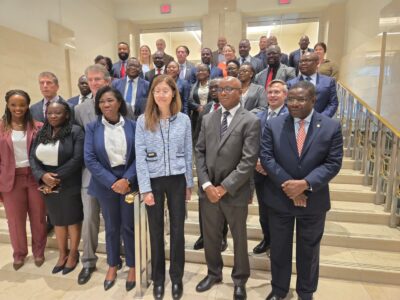A new report has revealed that half of Zambia’s Special Drawing Rights (SDRs) allocation has been used to support the 2022 budget, with the remaining half divided equally between 2023 and 2024.
The research analysis on “Inclusive Economic Recoveries for Africa: A forecast on Special Drawing Rights” was unveiled in Lusaka on Wednesday at a meeting to interrogate use of SDRs in Zambia, Kenya, Malawi, and Senegal.
The meeting was led by the African Women’s Development and Communication Network (FEMNET) under its Economic Justice and Rights Programme, with support from the Bill and Melinda Gates Foundation.
The aim of the two-day meeting which ended on Wednesday was to interrogate how SDRs received from the International Monetary Fund (IMF) had been used by Zambia, Kenya, Malawi, and Senegal.
In August 2021, Zambia received an SDR allocation of SDR 1.3 billion (US$1.84 billion), increasing their level of reserves to $2.9 billion or about 3.1 months of import cover, albeit still below the estimated optimal level of five months.
According to findings from the research paper, Zambia’s SDR allocation had primarily supported social spending in 2022.
Read more: Meeting to interrogate how Zambia, others used IMF Special Drawing Rights convenes in Lusaka
“The authorities have utilised about half of the allocation to support the 2022 budget, with the remaining half divided equally between 2023 and 2024.
“At the same time, the allocation has also supported the clearance of pension arrears, purchases of drugs and medical supplies, the Social Cash Transfer (SCT) program, and the Food Security Pack programme,” the report stated.
The report indicated that while the IMF emphasised the need for SDR allocation to support equality, explicit focus on ensuring that SDR allocation contributed to the gender equality objectives or benefits different categories of people was not explicitly stated.
On the gender budget allocation in Kenya, Malawi, Zambia, and Senegal, the report showed that they were statements of the Government’s priorities in a given fiscal year.
It revealed that despite the need for gender responsive budgets, allocations to gender initiatives had not been explicitly spelt out in the national budgets for Kenya, Malawi, Senegal and Zambia.
The report also showed that while all the case study countries had adopted gender-responsive budgeting in some way, several indicators for best Practices for Gender Budgeting were still missing.
“SDR holding as a proportion of Cumulative reserves in all the four countries more than 10 percent share but less than 100 percent, suggesting usage and thus an interest on utilized SDR allocation.
“While SDR offered option, there was never an explicit earmarking of the SDR. Although the SDR utilisation data is scarce and impartial, the available sources revealed multi use of SDR mainly for general budget support, public debt redemption, and rebuilding of foreign exchange reserves,” according to the report.
WARNING! All rights reserved. This material, and other digital content on this website, may not be reproduced, published, broadcast, rewritten or redistributed in whole or in part without prior express permission from ZAMBIA MONITOR.












Comments